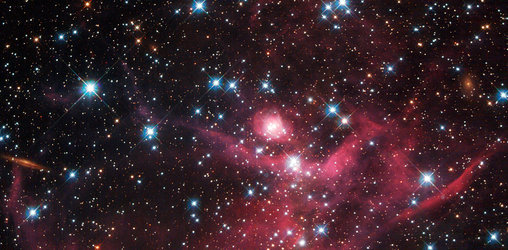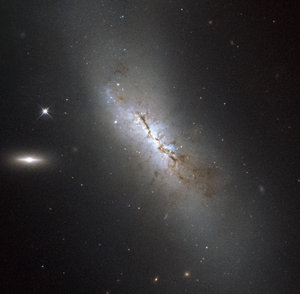Accept all cookies Accept only essential cookies See our Cookie Notice

About ESA
The European Space Agency (ESA) is Europe’s gateway to space. Its mission is to shape the development of Europe’s space capability and ensure that investment in space continues to deliver benefits to the citizens of Europe and the world.
Highlights
ESA - United space in Europe
This is ESA ESA facts Member States & Cooperating States Funding Director General Top management For Member State Delegations European vision European Space Policy ESA & EU Space Councils Responsibility & Sustainability Annual Report Calendar of meetings Corporate newsEstablishments & sites
ESA Headquarters ESA ESTEC ESA ESOC ESA ESRIN ESA EAC ESA ESAC Europe's Spaceport ESA ESEC ESA ECSAT Brussels Office Washington OfficeWorking with ESA
Business with ESA ESA Commercialisation Gateway Law at ESA Careers Cyber resilience at ESA IT at ESA Newsroom Partnerships Merchandising Licence Education Open Space Innovation Platform Integrity and Reporting Administrative Tribunal Health and SafetyMore about ESA
History ESA Historical Archives Exhibitions Publications Art & Culture ESA Merchandise Kids Diversity ESA Brand Centre ESA ChampionsSpace in Member States
Find out more about space activities in our 23 Member States, and understand how ESA works together with their national agencies, institutions and organisations.
Science & Exploration
Exploring our Solar System and unlocking the secrets of the Universe
Go to topicAstronauts
Missions
Juice Euclid Webb Solar Orbiter BepiColombo Gaia ExoMars Cheops Exoplanet missions More missionsActivities
International Space Station Orion service module Gateway Concordia Caves & Pangaea BenefitsLatest
Space Safety
Protecting life and infrastructure on Earth and in orbit
Go to topicAsteroids
Asteroids and Planetary Defence Asteroid danger explained Flyeye telescope: asteroid detection Hera mission: asteroid deflection Near-Earth Object Coordination CentreSpace junk
About space debris Space debris by the numbers Space Environment Report In space refuelling, refurbishing and removingSafety from space
Clean Space ecodesign Zero Debris Technologies Space for Earth Supporting Sustainable DevelopmentApplications
Using space to benefit citizens and meet future challenges on Earth
Go to topicObserving the Earth
Observing the Earth Future EO Copernicus Meteorology Space for our climate Satellite missionsCommercialisation
ESA Commercialisation Gateway Open Space Innovation Platform Business Incubation ESA Space SolutionsLatest
Enabling & Support
Making space accessible and developing the technologies for the future
Go to topicBuilding missions
Space Engineering and Technology Test centre Laboratories Concurrent Design Facility Preparing for the future Shaping the Future Discovery and Preparation Advanced Concepts TeamSpace transportation
Space Transportation Ariane Vega Space Rider Future space transportation Boost! Europe's Spaceport Launches from Europe's Spaceport from 2012Latest

A golden veil cloaks a newborn star
Thank you for liking
You have already liked this page, you can only like it once!
This young star is breaking out. Like a hatchling pecking through its shell, this particular stellar newborn is forcing its way out into the surrounding Universe.
The golden veil of light cloaks a young stellar object known only as IRAS 14568-6304. It is ejecting gas at supersonic speeds and eventually will have cleared a hole in the cloud, allowing it to be easily visible to the outside Universe.
Stars are born deep in dense clouds of dust and gas. This particular cloud is known as the Circinus molecular cloud complex. It is 2280 light-years away and stretches across 180 light-years of space. If our eyes could register the faint infrared glow of the gas in the cloud, it would stretch across our sky more than 70 times the size of the full Moon. It contains enough gas to make 250 000 stars like the Sun.
IRAS 14568-6304 was discovered with the Infrared Astronomical Satellite, launched in 1983 as a joint project of the US, the UK and the Netherlands to make the first all-sky infrared survey from space.
This particular image was taken by the NASA/ESA Hubble Space Telescope. It is a combination of just two wavelengths: optical light (blue) and infrared (golden orange). The dark swath running across the image is the Circinus molecular cloud, which is so dense that it obscures the stars beyond.
At longer infrared wavelengths, this darkness is filled with point-like stars, all deeply embedded and which will one day break out like IRAS 14568-6304 is doing.
Indeed, IRAS 14568-6304 is just one member of a nest of young stellar objects in this part of Circinus, each of which is producing jets. Put together, they make up one of the brightest, most massive and most energetic outflows that astronomers have yet observed. In years to come, they will be a beautiful, brightly visible star cloud.
-
CREDIT
ESA/Hubble & NASA Acknowledgements: R. Sahai (Jet Propulsion Laboratory), S. Meunier -
LICENCE
ESA Standard Licence

Violent birth announcement from an infant star

Cloaked in red

A galactic cloak for an exploding star

Hubble celebrates its 33rd anniversary with NGC 1333















 Germany
Germany
 Austria
Austria
 Belgium
Belgium
 Denmark
Denmark
 Spain
Spain
 Estonia
Estonia
 Finland
Finland
 France
France
 Greece
Greece
 Hungary
Hungary
 Ireland
Ireland
 Italy
Italy
 Luxembourg
Luxembourg
 Norway
Norway
 The Netherlands
The Netherlands
 Poland
Poland
 Portugal
Portugal
 Czechia
Czechia
 Romania
Romania
 United Kingdom
United Kingdom
 Slovenia
Slovenia
 Sweden
Sweden
 Switzerland
Switzerland
























